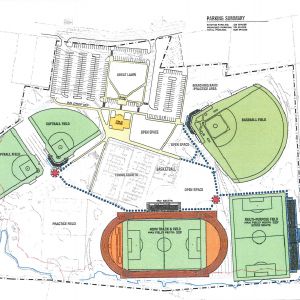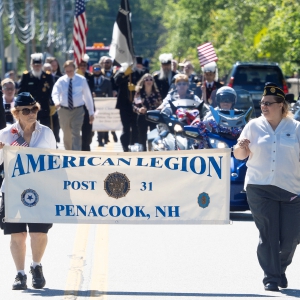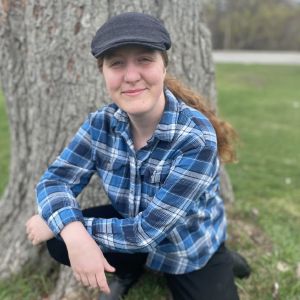Vintage Views: A return to life
| Published: 09-10-2022 11:33 AM |
There are times in life when we encounter situations that are deemed strange, unknown and somewhat of a mystery. These encounters happen every day. Sometimes we share our thoughts while at other times we simply accept the days as they are dealt. Travel back with me to meet a gentleman named Amos Lincoln Colburn, born on June 11, 1832 in Dracut, Mass. He attended common schools to receive his primary education engaging in the millwright business with his father in time. Young Amos moved north to Concord, N.H., finding employment with the Concord Railroad building bridges until the War of the Rebellion crept quietly into his routine life.
On April 20, 1861, Amos enlisted as a private in Company I, First New Hampshire Regiment. Completing his basic training in Concord he soon found himself campaigned in Maryland and Virginia. Amos served under General Patterson at Williamsport and Martinsburg, Va., and engaged in battle at Winchester. On Aug. 9, 1861 Amos Lincoln Colburn mustered out of the army as a corporal returning to his beloved New Hampshire. While back in Concord his thoughts remained in the army and the private life of a bridge builder was no longer a desire. So it was that Amos reenlisted in Company I, Fourth New Hampshire Regiment at Concord. Immediately returning to the war he recently left he found himself at the front again via Washington, taking a ship at Fortress Monroe he joined Sheridan’s expedition to Hilton Head, S.C. Amos was made First Sergeant at muster while once again in Hilton Head he was appointed Second Lieutenant on May 17, 1862. Amos was so well adapted to the life of a soldier he was again promoted First Lieutenant on Dec. 1, 1863, returning to Beaufort, S.C., he participated in the siege of Charlestown. Colburn’s command joined with General Butler in Virginia where he was assigned to Company F. This is where Amos Lincoln Colburn has an experience that followed him back to the town of Concord, New Hampshire many years later.
Amos found himself on the field of glory engaged in the battle of Drury’s Bluff on May 11, 1864 when he died a hero. Company F reported the official death of Amos Lincoln Colburn to Headquarters and the sad affair concluded. There was indeed a very serious problem with the death of Amos, some people simply don’t die.
Amos is reported to have fought again at the siege of Peterburg and was wounded twice by a mine explosion on June 30. On Aug. 16, we find Amos again seriously wounded at Deep Bottom by a Minnie ball entering above his right knee. Amos is recorded as spending the next three months in the army hospital where he was promoted to the rank of Captain, soon mustering out of the army his final time.
Word of his demise reached his fellow veterans in Concord, N.H. Deeply saddened the local Grand Army of the Republic erected a gravestone at the Blossom Hill Cemetery to honor this soldier that perished on the field of battle. A military funeral was held at the new gravestone in Blossom Hill Cemetery and the grave remained empty in anticipation of the eventual arrival of the body of First Lieutenant Amos L. Colburn. The body never arrived, the months turned to years and the War of the Rebellion did conclude.
Captain Colburn did not waste time reestablishing his civilian career. His love of New Hampshire remained strong, he chose to return to Manchester rather than Concord, finding employment with the Fairbanks Scale Company as a salesman and scale repair expert. Eventually Amos opened his own scale business in Manchester, settling into the same business in Lawrence, Mass., years later. Business was kind to Amos and he did well financially. As he aged, he decided to sell his well-established business in Lawrence, Mass., and return to the little town of Concord, N.H., where he had departed for his career in the army during the Civil War many years before.
Amos was active in the Grand Army of the Republic after his years spent in the army, spending time with the GAR in Manchester and Lawrence but never in the town of Concord. So it was that Amos Lincoln Colburn returned to the town of Concord once again after decades of absence. He established a new home and enjoyed meeting many new friends. In particular he enjoyed his late afternoon walks returning home after sunset each evening. It was during one of his walks that Amos ventured into the beautifully landscaped Blossom Hill Cemetery. He walked the roads spending some time at the duckpond. He ventured further and admired the artistry of the craftsmen that created such magnificent gravestones.
Amos continued his daily walks to the cemetery, somewhat of a routine now in his retirement years after selling his business in Massachusetts. It was on a cloudy fall day when the trees still held their vibrant color that Amos made a startling discovery. As he wandered about his eyes found a beautiful granite gravestone setting back away from the road on a grassy knoll. The stone in all its glory was engraved with his very own name. Amos, long absent from the town of Concord, had discovered his very own gravestone. The stone that was placed to honor his demise on the field of battle so very many years before.
Article continues after...
Yesterday's Most Read Articles
 By all appearances, Canadians are leery of coming to NH
By all appearances, Canadians are leery of coming to NH
 Plans advance on $27M Memorial Field project
Plans advance on $27M Memorial Field project
 “A dream come true” – Family opens housing for adults with disabilities in Concord
“A dream come true” – Family opens housing for adults with disabilities in Concord
 Memorial Day events in the Concord area
Memorial Day events in the Concord area
 Giving life back to board sports: Back Alley Boards upcycles boards into art
Giving life back to board sports: Back Alley Boards upcycles boards into art
 ‘I thought we had some more time’ – Coping with the murder-suicide of a young Pembroke mother and son
‘I thought we had some more time’ – Coping with the murder-suicide of a young Pembroke mother and son
Though the grave was empty I can assure you it is no longer. I have confirmed with Concord Cemetery Director Jill McDaniel-Huckins this very day that the body of Amos Lincoln Colburn has found eternal rest in this hallowed ground beside his wife. Amos, a practical business man, felt the gravestone erected in his honor was a very moving experience, there was no point to leave his grave empty. Amos was indeed buried on the grassy knoll in Blossom Hill Cemetery when he truly died for a second and final time on June 12, 1916.
]]>







 Artist Spotlight: Brittany Batchelder
Artist Spotlight: Brittany Batchelder Young Professional of the Month Katie Duncan shares about creativity, community, connection
Young Professional of the Month Katie Duncan shares about creativity, community, connection Tiny Tapestry sale at Red River Theaters raising money for Concord Coalition to End Homelessness
Tiny Tapestry sale at Red River Theaters raising money for Concord Coalition to End Homelessness Bowling for a cause: Angelman Syndrome Fundraiser coming to Boutwell’s
Bowling for a cause: Angelman Syndrome Fundraiser coming to Boutwell’s
